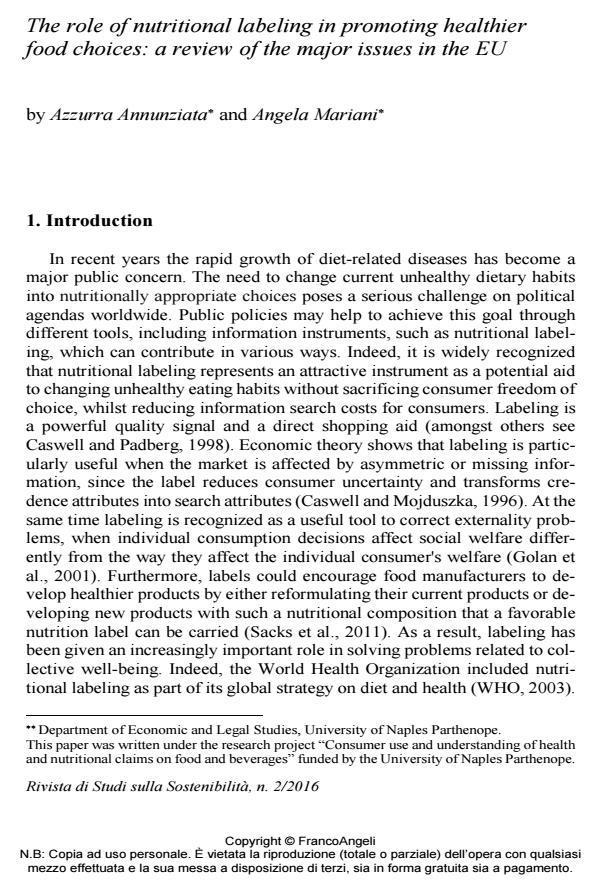The role of nutritional labeling in promoting healthier food choices: a review of the major issues in the EU
Journal title RIVISTA DI STUDI SULLA SOSTENIBILITA'
Author/s Azzurra Annunziata, Angela Mariani
Publishing Year 2017 Issue 2016/2
Language English Pages 13 P. 107-119 File size 166 KB
DOI 10.3280/RISS2016-002010
DOI is like a bar code for intellectual property: to have more infomation
click here
Below, you can see the article first page
If you want to buy this article in PDF format, you can do it, following the instructions to buy download credits

FrancoAngeli is member of Publishers International Linking Association, Inc (PILA), a not-for-profit association which run the CrossRef service enabling links to and from online scholarly content.
As the widespread rapid growth of diet-related diseases becomes a major public concern, nutritional labeling is increasingly considered a potential tool to support the goal of changing unhealthy eating habits while retaining consumer freedom of choice. This paper aims to contribute to the institutional debate on the effectiveness of nutritional labeling on the back or front of packaging in promoting healthier food choices, focusing on the EU. The major issues detected and discussed are based on a literature review of recent studies that have examined the limits and potentials of such tools. Finally, we discuss other promising application fields of nutritional labeling, such as on alcoholic beverages and restaurant menus, and present some directions for further research.
Keywords: Food choices, nutritional labeling, health logo, Traffic Lights, Guideline Daily Amounts (GDAs), UE policies.
Azzurra Annunziata, Angela Mariani, The role of nutritional labeling in promoting healthier food choices: a review of the major issues in the EU in "RIVISTA DI STUDI SULLA SOSTENIBILITA'" 2/2016, pp 107-119, DOI: 10.3280/RISS2016-002010